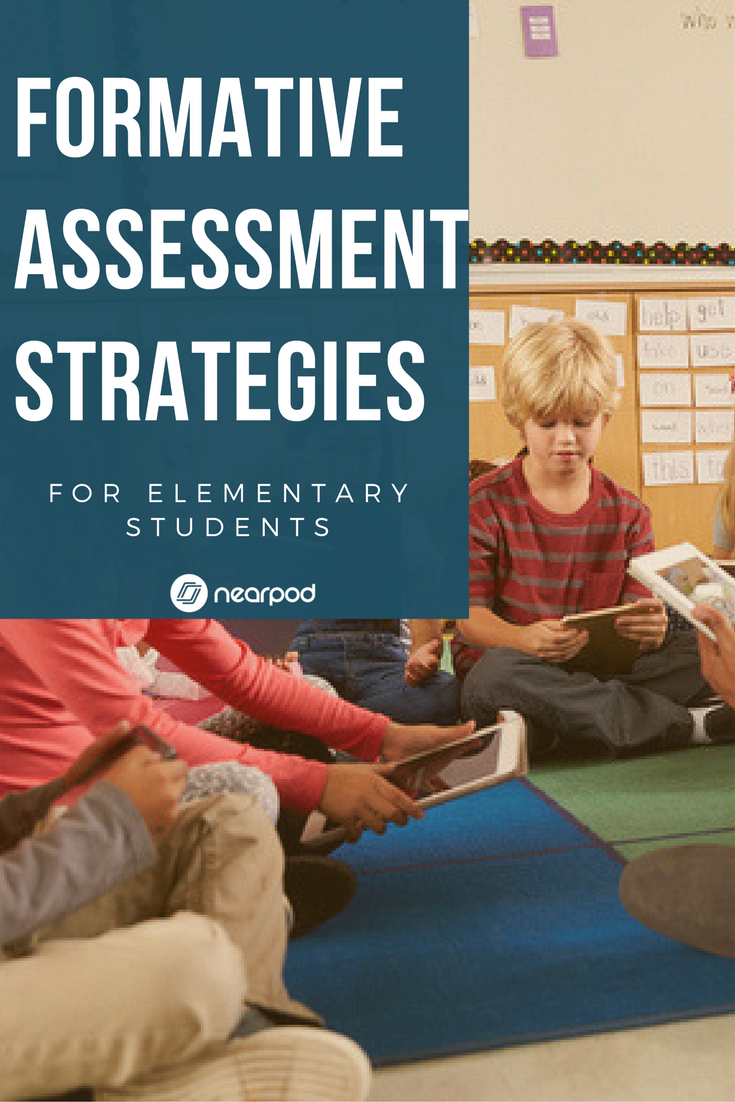
Formative Assessment Ideas for Elementary Students
When promoting the school-wide use of formative assessments, there are grade level considerations that must be made by administrators and educational leaders. Formative assessment options that might be well suited for secondary students are not always appropriate at the elementary level.
In general, the goal of formative assessments should be to collect data on student learning so that adjustments can be made before students reach a summative assessment. However, the type of assessment that is conducted, as well as the type of data that is collected, can often look different depending on the grade level.
This post explores three ideas for how formative assessments can be used in the elementary classroom, and how technology can be used to support these types of assessments.
Read three ways that formative assessments can be used in the elementary classroom, and how technology can be used to support these types of assessments. #NearpodClick To TweetAnnotated or Drawn Responses
While traditional formative assessments often take the form of a quiz or a poll, teachers can also gain an understanding of student progress through drawings and annotations.
Teachers can start with a blank page, an image they’ve created, or even have the students take their own pictures which can then be labeled, drawn on, and/or annotated. Teachers can then use these images to gain instant insight into a student’s understanding of a topic.
Particularly when digital tools like Nearpod are used to facilitate this process, student drawings and annotations can offer significant benefits over traditional formative assessment activities.
Former teacher and edtech leader Monica Burns expands on this idea:
“One of my favorite features is [Nearpod’s] Draw It. When students draw a picture to show what they know you get a deeper idea of student understanding than the results of a multiple choice test. Working with teachers this school year, we were able to add a coordinate plane to the Draw It tool in Nearpod so students could plot points on a grid. Instantly the classroom teacher could tell who needed extra help, or whether or not the class could benefit from additional examples or more time to practice.”
Engage in a Digital Discussion
For anyone who has taught or observed a classroom session, you’re likely familiar with the typical classroom discussion. The teacher asks a question, some students raise their hand to answer, and there will likely be other students who never get the opportunity to participate.
While discussions can be a great source of formative assessment data, they’re not always beneficial if the teacher is not hearing from every student.
While discussions can be a great source of formative assessment data, they’re not always beneficial if the teacher is not hearing from every student. Eliminate this with #NearpodClick To TweetTools like Nearpod can improve on this process with features like Collaborate! which allows teachers and students to have a digital discussion in real-time. Using tools like this, teachers can make sure that all of their students are participating in the discussion, and students can even embed images and links within the discussion.

Plus, if teachers don’t have time during class to get to every student’s response, they have the ability to look back at the responses later to see what each student contributed.
Using tools like this, teachers can take their classroom discussions to the next level, and ensure they are collecting formative assessment data on all students, not just the ones who are comfortable speaking up in class.
Want to use technology for formative assessments with your elementary students? Read 3 effective ways to do so with Nearpod!Click To TweetReflect on Progress
Finally, elementary teachers can promote student reflection in their classroom, and use those reflections as an opportunity to collect formative assessment data.
Research has shown that reflection is crucial in order for students to make meaning out of their classroom experiences. But in addition to meaning for students, reflections give teachers the opportunity to check in with their students on how that meaning is being made.
In their book Learning and Leading with Habits of Mind, Arthur Costa and Bena Kallick explain what this looks like in the classroom:
“In the reflective classroom, teachers invite students to make meaning from their experiences overtly in written and oral form. They take the time to invite students to reflect on their learnings, to compare intended with actual outcomes, to evaluate their metacognitive strategies, to analyze and draw causal relationships, and to synthesize meanings and apply their learnings to new and novel situations.”
Digital tools like Nearpod can add another layer to this reflection by automatically collecting formative assessment data across multiple lessons. Teachers can share this formative assessment data with their students in order to prompt reflection and engage in conversations with their students about the progress they’ve made.

Conclusion
Research has shown that the use of formative assessments in the classroom can lead to increased student engagement and achievement.
As with any educational strategy, there are a variety of ways to approach formative assessments. The three ideas discussed in this post offer innovative approaches to formative assessment, particularly in terms of how technology can be used to support the process.
For those interested in exploring more ideas on using formative assessments in the elementary classroom, this recent webinar on Formative Assessment in Action offers even more innovative examples.


Nearpod’s award-winning platform is used by thousands of schools around the globe, transforming classroom engagement.








